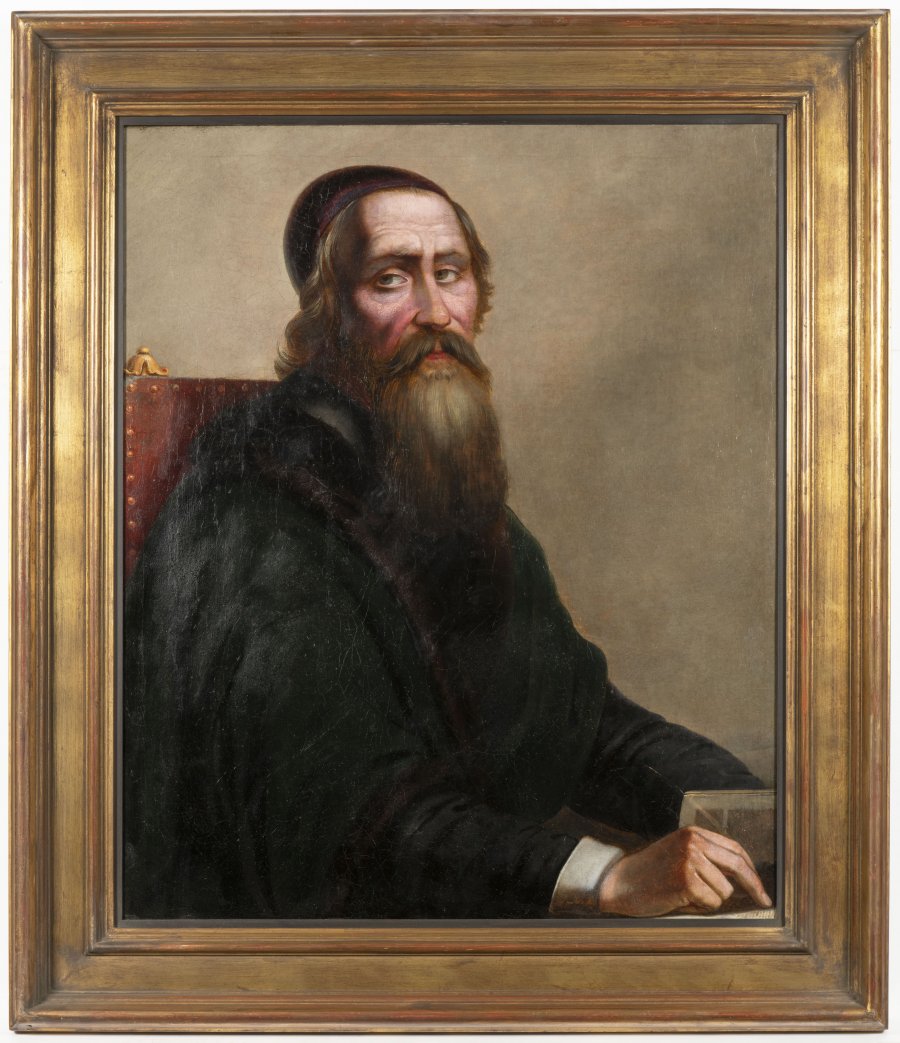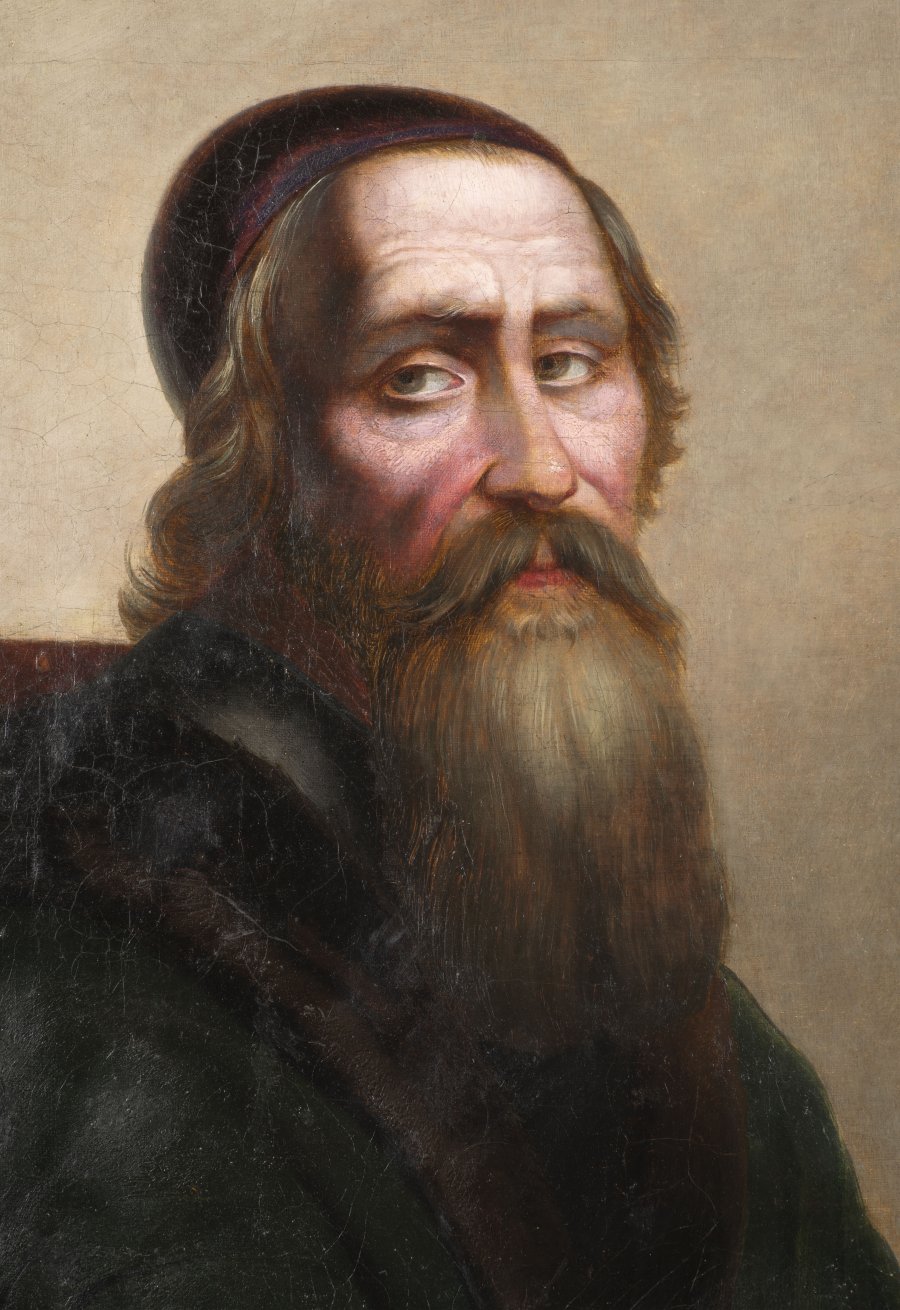Lot 40
JAN AMOS KOMENSKÝ
1850s
oil on canvas
78 x 65 cm (h x w)
unsigned
| 5 217 €
The present likeness of Jan Amos Komenský is considered to be the work of Josef Vojtěch Hellich, a pupil of Josef Bergler and František Waldherr at the Prague Academy (1824-1836). After his studies, Hellich travelled extensively. 1836-1839 he made a study trip to Italy, in Rome he studied, like most of his peers, the Old Masters and especially the works of Raffaello, but he expanded his studies to include art history and archaeology, subjects he devoted himself to passionately throughout his life and usually signed his works with a depiction of an ancient cairn. In 1840 he became the first curator of the collections of the Museum of the Kingdom of Bohemia, working alternately in Vienna and Prague, and from 1848 he lived permanently in Prague. In Prague, Hellich quickly became a member of the Prague patriotic intelligentsia gathered in the family of the physician, writer and MP MUDr. Václav Staňek. Here he regularly met his brothers-in-law J. V. Frič, F. L. Čelakovský, their wives and many other friends. Bohuslava Rajská, the second wife of the writer Čelakovský, brought among them also Božena Němcová, who charmed Hellich so much that he portrayed her in 1845. The likeness of the famous writer is part of the collections of Prague Castle, for which it was purchased from Milena Staňková by the Masaryk National Fund in 1929. As the society around the Staňková, Fričová and Čelakovský families was educated and strongly patriotic, the likeness of Jan Ámos Komenský, after 1848 a popular figure of the then conscious and Slavic-oriented society, hung in their common rooms. According to the daughter of PhDr.J.Šetlík, the presented likeness of Jan Amos Komenský was already owned by her grandfather and was always considered by the family to be the work of Josef Vojtěch Hellich. The presented likeness of Jan Amos Komenský is impressive in its composition, the delicate execution of the skin incarnation, the composition of the variously dark valers and the sensitivity and purity of the execution. The painting is accompanied by an expert opinion by Naděžda Blažíčková-Horová, PhD.
More works from auction
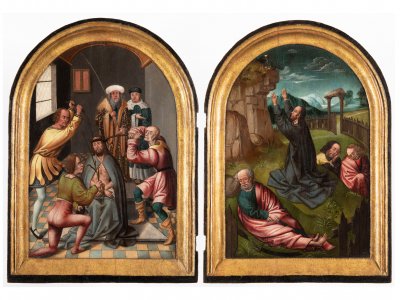
Lot 1 ALTAR WINGS
Starting price60 000 CZK | 2 609 €
Price realized
180 000 CZK | 7 826 €
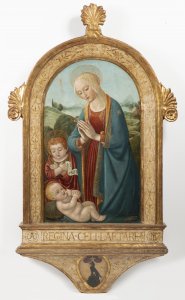
Lot 2 MADONNA WITH JESUS AND ST. JOHN THE BAPTIST
Starting price800 000 CZK | 34 783 €
Price realized
1 700 000 CZK | 73 913 €
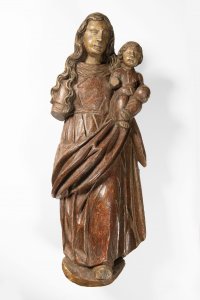
Lot 3 MADONNA WITH CHILD
Starting price45 000 CZK | 1 957 €
Price realized
50 000 CZK | 2 174 €
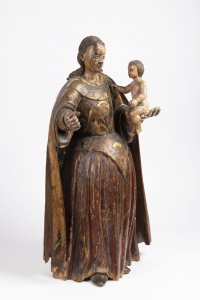
Lot 4 MADONNA WITH A CHILD
Starting price45 000 CZK | 1 957 €
Price realized
50 000 CZK | 2 174 €
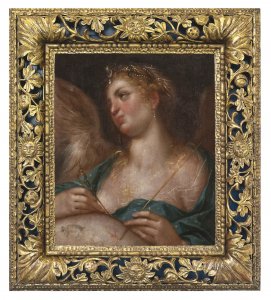
Lot 5 URANIA
Starting price180 000 CZK | 7 826 €
Price realized
370 000 CZK | 16 087 €

Lot 6 ADORATION OF SHEPHERDS
Starting price120 000 CZK | 5 217 €
Price realized
120 000 CZK | 5 217 €
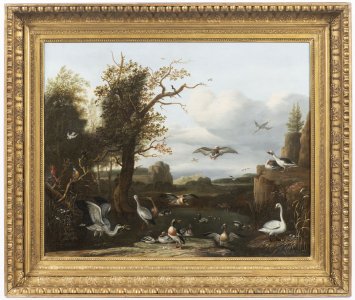
Lot 7 ALLEGORY OF AIR
Starting price55 000 CZK | 2 391 €
Price realized
110 000 CZK | 4 783 €
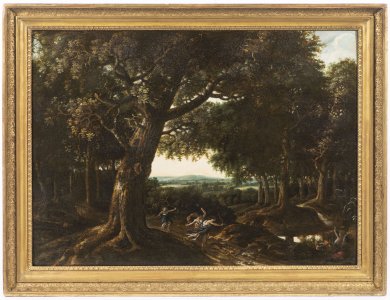
Lot 8 HUNTING DIANA
Starting price55 000 CZK | 2 391 €
Price realized
55 000 CZK | 2 391 €
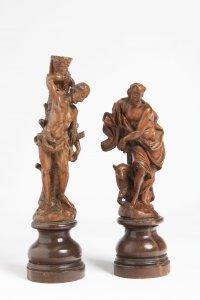
Lot 9 TWO BAROQUE SMALL SCULPTURES
Starting price35 000 CZK | 1 522 €
Price realized
70 000 CZK | 3 043 €
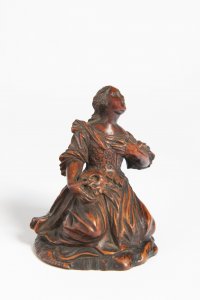
Lot 10 SAINT MARY MAGDALENE
Starting price12 000 CZK | 522 €
Price realized
20 000 CZK | 870 €
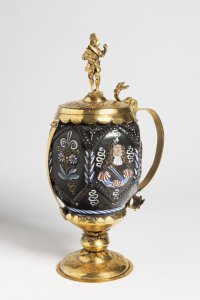
Lot 11 CERAMIC TANKARD IN GILDED MOUNTING
Starting price40 000 CZK | 1 739 €
Price realized
42 000 CZK | 1 826 €
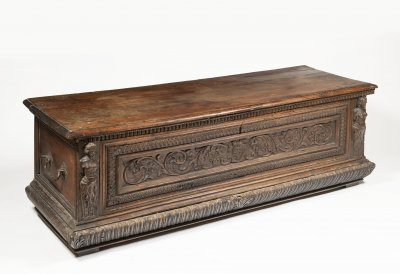
Lot 12 A MANNERIST CHEST
Starting price55 000 CZK | 2 391 €
Price realized
70 000 CZK | 3 043 €
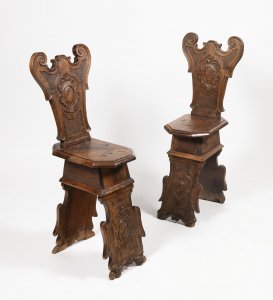
Lot 13 A PAIR OF MANNERIST SGABELLO CHAIRS
Starting price24 000 CZK | 1 043 €
Price realized
30 000 CZK | 1 304 €

Lot 14 A PAIR OF MANNERIST ARMCHAIRS
Starting price30 000 CZK | 1 304 €
Price realized
30 000 CZK | 1 304 €
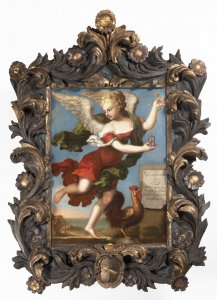
Lot 15 ALLEGORY OF TIME
Starting price110 000 CZK | 4 783 €
Price realized
290 000 CZK | 12 609 €
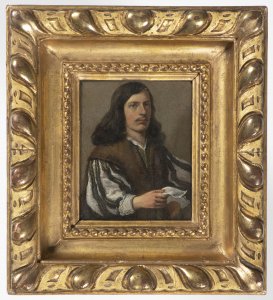
Lot 16 PORTRAIT OF A NOBLEMAN
Starting price8 000 CZK | 348 €
Price realized
8 000 CZK | 348 €
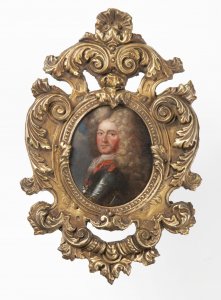
Lot 17 PORTRAIT OF A NOBLEMAN
Starting price12 000 CZK | 522 €
Price realized
15 000 CZK | 652 €
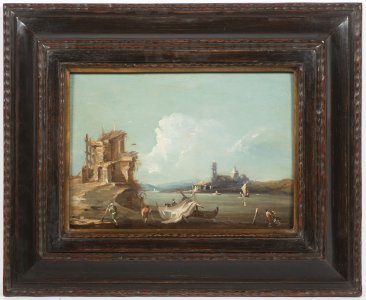
Lot 18 LANDSCAPE NEAR VENICE
Starting price18 000 CZK | 783 €
Price realized
24 000 CZK | 1 043 €
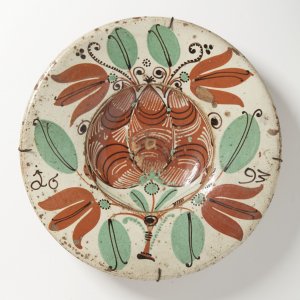
Lot 19 A PLATE
Starting price40 000 CZK | 1 739 €
Price realized
40 000 CZK | 1 739 €
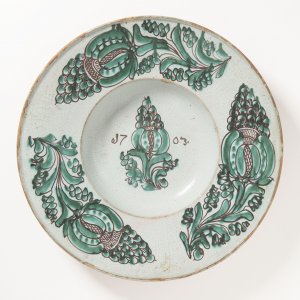
Lot 20 A ZITTAU PLATE
Starting price45 000 CZK | 1 957 €
Price realized
45 000 CZK | 1 957 €
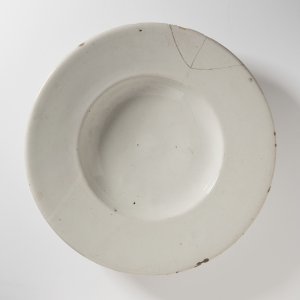
Lot 21 A HABAN PLATE
Starting price55 000 CZK | 2 391 €
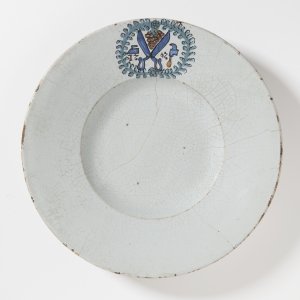
Lot 22 A HABAN PLATE
Starting price70 000 CZK | 3 043 €
Price realized
120 000 CZK | 5 217 €
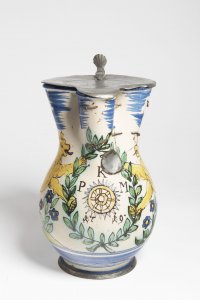
Lot 23 A HABAN JUG WITH LID
Starting price55 000 CZK | 2 391 €
Price realized
55 000 CZK | 2 391 €
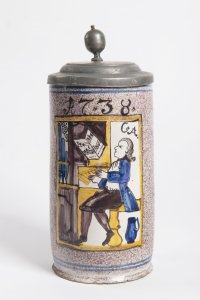
Lot 24 A POSTHABAN TANKARD
Starting price48 000 CZK | 2 087 €
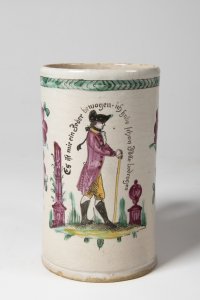
Lot 25 A POSTHABAN TANKARD
Starting price25 000 CZK | 1 087 €
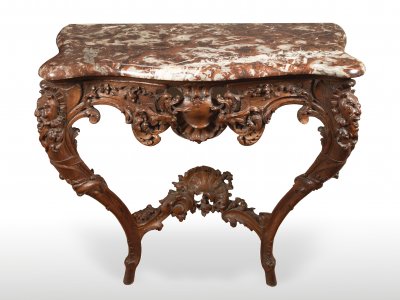
Lot 26 A REGENCE PERIOD FRENCH CONSOLE TABLE
Starting price30 000 CZK | 1 304 €
Price realized
32 000 CZK | 1 391 €
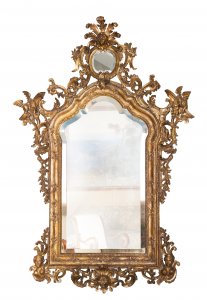
Lot 27 AN ITALIAN BAROQUE MIRROR
Starting price65 000 CZK | 2 826 €
Price realized
65 000 CZK | 2 826 €
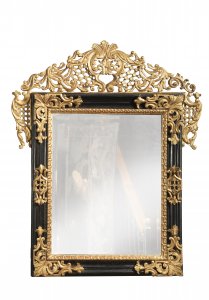
Lot 28 A BAROQUE MIRROR
Starting price28 000 CZK | 1 217 €
Price realized
28 000 CZK | 1 217 €
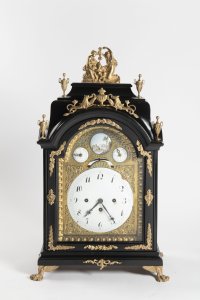
Lot 29 A PRAGUE BAROQUE TABLE CLOCK
Starting price40 000 CZK | 1 739 €
Price realized
60 000 CZK | 2 609 €
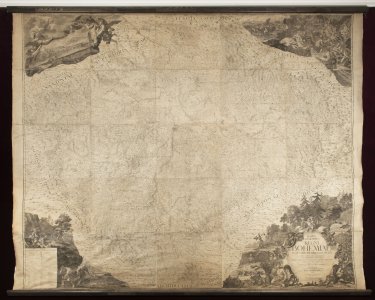
Lot 30 MÜLLER'S MAP OF BOHEMIA
Starting price120 000 CZK | 5 217 €

Lot 31 AN EMPIRE CHANDELIER
Starting price85 000 CZK | 3 696 €
Price realized
85 000 CZK | 3 696 €

Lot 32 AN EMPIRE TABLE CLOCK
Starting price80 000 CZK | 3 478 €
Price realized
100 000 CZK | 4 348 €
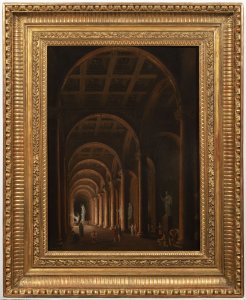
Lot 33 INTERIOR OF ANCIENT TEMPLE
Starting price120 000 CZK | 5 217 €
Price realized
140 000 CZK | 6 087 €
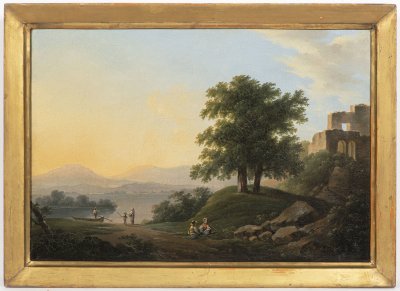
Lot 34 LANDSCAPE WITH A LAKE
Starting price18 000 CZK | 783 €
Price realized
28 000 CZK | 1 217 €
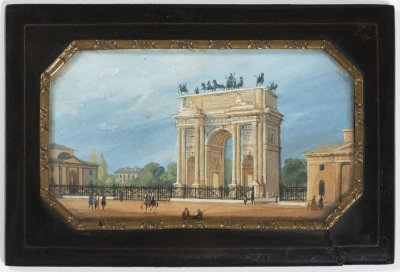
Lot 35 ARCH OF TRIUMPH IN MILAN
Starting price10 000 CZK | 435 €
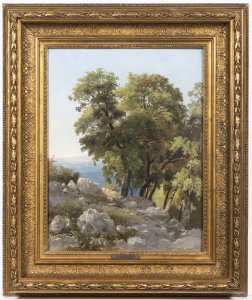
Lot 36 ITALIAN LANDSCAPE
Starting price45 000 CZK | 1 957 €
Price realized
47 000 CZK | 2 043 €
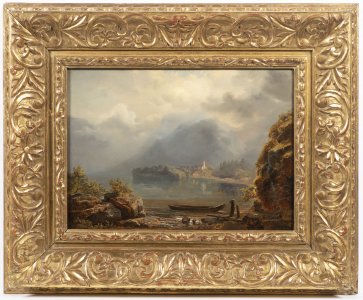
Lot 37 ALPINE LANDSCAPE WITH A LAKE
Starting price90 000 CZK | 3 913 €
Price realized
170 000 CZK | 7 391 €
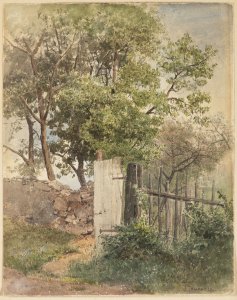
Lot 38 BY THE FENCE
Starting price25 000 CZK | 1 087 €
Price realized
28 000 CZK | 1 217 €
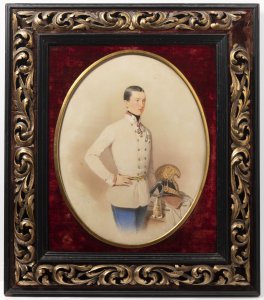
Lot 39 ARCHDUKE KARL LUDWIG
Starting price25 000 CZK | 1 087 €
Price realized
41 000 CZK | 1 783 €
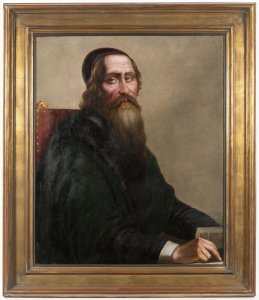
Lot 40 JAN AMOS KOMENSKÝ
Starting price120 000 CZK | 5 217 €
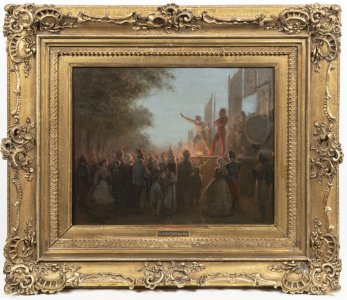
Lot 41 PARISIAN COMEDIANS
Starting price180 000 CZK | 7 826 €
Price realized
180 000 CZK | 7 826 €
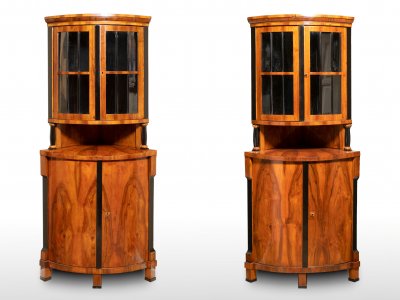
Lot 42 A PAIR OF BIEDERMEIER CORNER DISPLAY CABINETS
Starting price95 000 CZK | 4 130 €

Lot 43 A BIEDERMEIER CHEST OF DRAWERS
Starting price28 000 CZK | 1 217 €
Price realized
28 000 CZK | 1 217 €

Lot 44 A SET OF FOUR BIEDERMEIER CHAIRS
Starting price70 000 CZK | 3 043 €
Sold
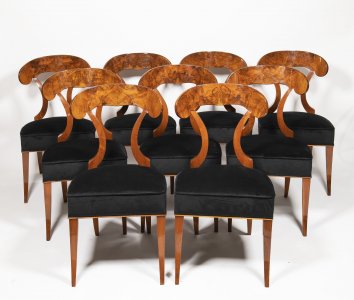
Lot 45 A SET OF NINE BIEDERMEIER CHAIRS
Starting price160 000 CZK | 6 957 €
Price realized
210 000 CZK | 9 130 €

Lot 46 A BIEDERMEIER FOLDING DINING TABLE
Starting price75 000 CZK | 3 261 €
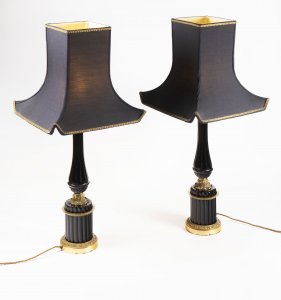
Lot 47 A PAIR OF NEOCLASSICAL TABLE LAMPS
Starting price19 000 CZK | 826 €
Price realized
30 000 CZK | 1 304 €
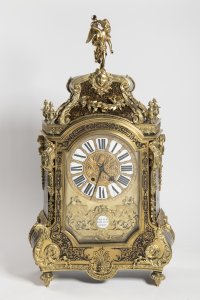
Lot 48 A LOUIS XIV STYLE TABLE CLOCK
Starting price55 000 CZK | 2 391 €
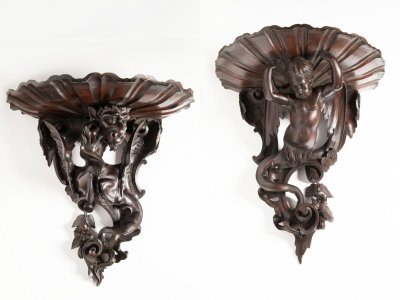
Lot 49 A PAIR OF BAROQUE STYLE CONSOLES
Starting price12 000 CZK | 522 €
Price realized
14 000 CZK | 609 €
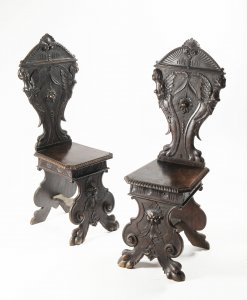
Lot 50 A PAIR OF RENAISSANCE STYLE SGABELLO CHAIRS
Starting price14 000 CZK | 609 €

Lot 51 A PAIR OF DUTCH CHANDELIERS
Starting price60 000 CZK | 2 609 €
Price realized
70 000 CZK | 3 043 €
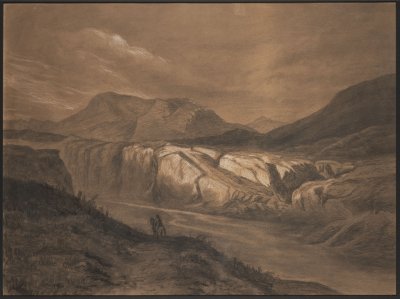
Lot 52 ROCKY LANDSCAPE WITH A RIDER
Starting price18 000 CZK | 783 €
Price realized
19 000 CZK | 826 €
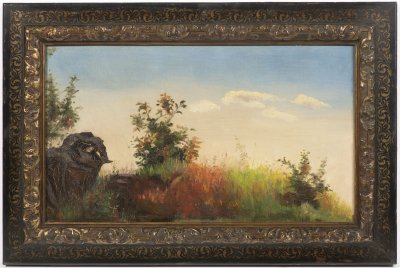
Lot 53 LANDSCAPE AT SUNSET
Starting price48 000 CZK | 2 087 €
Price realized
60 000 CZK | 2 609 €
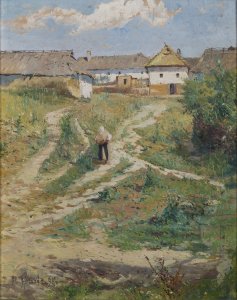
Lot 54 ON THE WAY TO THE VILLAGE
Starting price40 000 CZK | 1 739 €
Price realized
130 000 CZK | 5 652 €
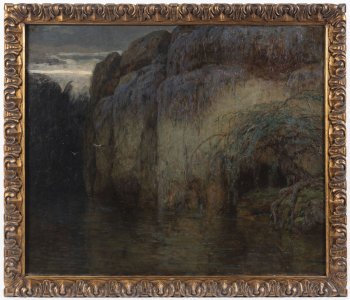
Lot 55 TWILIGHT
Starting price70 000 CZK | 3 043 €
Price realized
80 000 CZK | 3 478 €
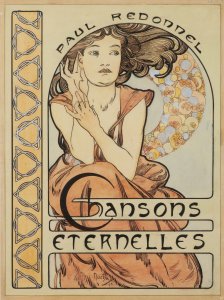
Lot 56 LES CHANSONS ÉTERNELLES
Starting price370 000 CZK | 16 087 €
Price realized
380 000 CZK | 16 522 €
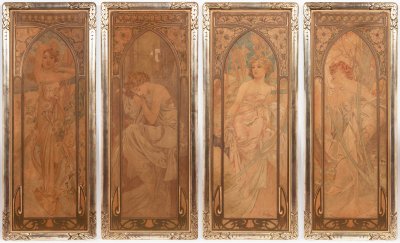
Lot 57 TIMES OF THE DAY
Starting price120 000 CZK | 5 217 €
Price realized
130 000 CZK | 5 652 €
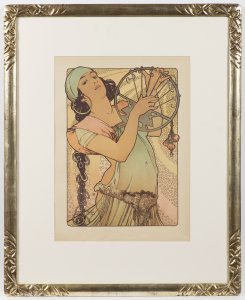
Lot 58 SALOME
Starting price16 000 CZK | 696 €
Price realized
32 000 CZK | 1 391 €
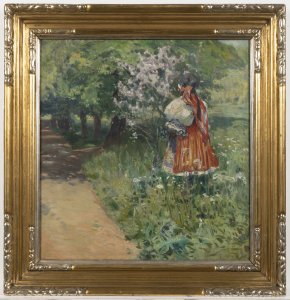
Lot 59 GIRL FROM SLOVÁCKO IN AN ALLEY
Starting price65 000 CZK | 2 826 €
Price realized
230 000 CZK | 10 000 €
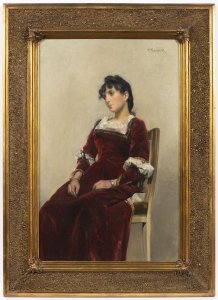
Lot 60 SITTING GIRL
Starting price55 000 CZK | 2 391 €
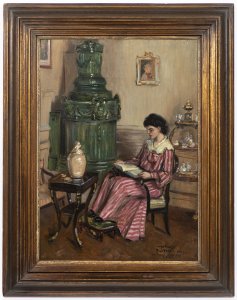
Lot 61 LADY IN AN ARMCHAIR
Starting price40 000 CZK | 1 739 €
Sold
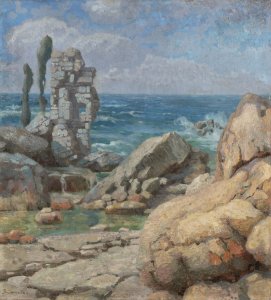
Lot 62 SEA CLIFFS IN DALMATIA
Starting price45 000 CZK | 1 957 €
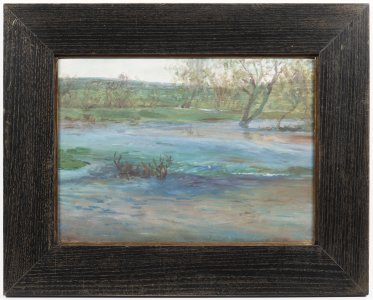
Lot 63 FLOODED MEADOWS IN THE EVENING
Starting price35 000 CZK | 1 522 €
Price realized
80 000 CZK | 3 478 €
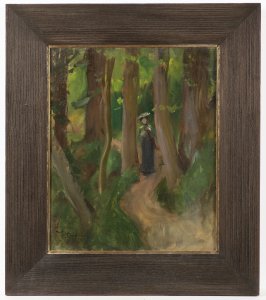
Lot 64 LADY ON A FOREST PATH
Starting price30 000 CZK | 1 304 €

Lot 65 WINTER LANDSCAPE
Starting price35 000 CZK | 1 522 €
Price realized
37 000 CZK | 1 609 €
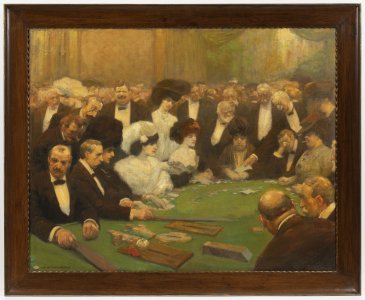
Lot 66 IN THE CASINO
Starting price240 000 CZK | 10 435 €
Price realized
320 000 CZK | 13 913 €
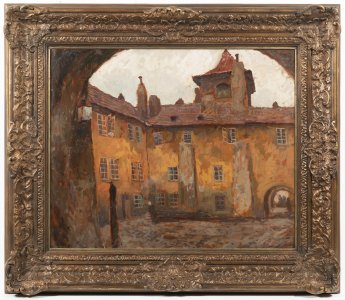
Lot 67 THE COURT OF THE AMBITUS OF THE ST. AGNES CONVENT
Starting price950 000 CZK | 41 304 €
Price realized
950 000 CZK | 41 304 €
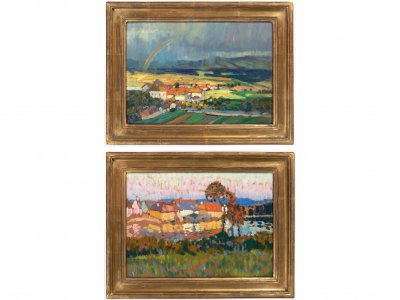
Lot 68 PAIR OF LANDSCAPES
Starting price24 000 CZK | 1 043 €
Price realized
110 000 CZK | 4 783 €
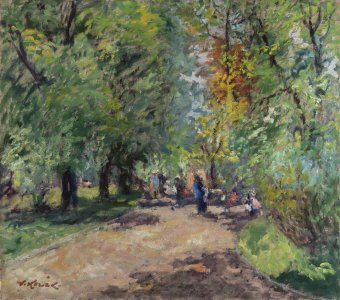
Lot 69 STROMOVKA
Starting price25 000 CZK | 1 087 €
Price realized
38 000 CZK | 1 652 €
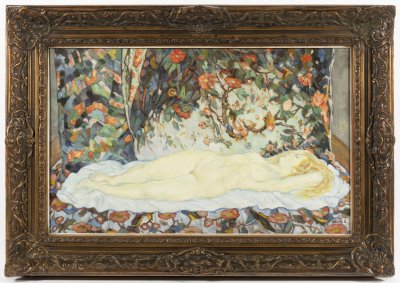
Lot 70 RECLINING NUDE
Starting price250 000 CZK | 10 870 €
Price realized
480 000 CZK | 20 870 €
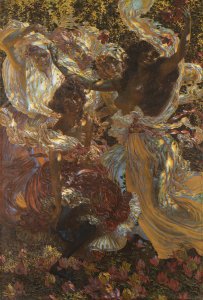
Lot 71 PLAY OF SUN STREAKS
Starting price3 500 000 CZK | 152 174 €
Price realized
6 100 000 CZK | 265 217 €
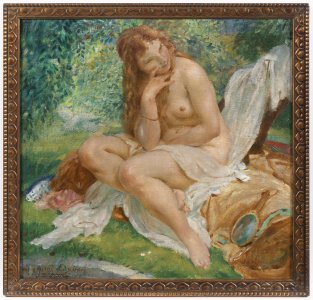
Lot 72 GIRL IN THE GARDEN
Starting price65 000 CZK | 2 826 €

Lot 73 SAVE THE BABIES
Starting price16 000 CZK | 696 €
Price realized
17 000 CZK | 739 €
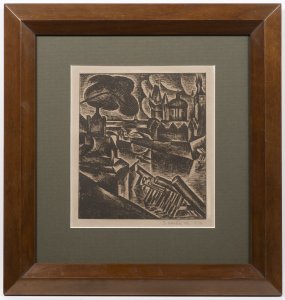
Lot 74 OLD PRAGUE MOTIF
Starting price65 000 CZK | 2 826 €
Price realized
400 000 CZK | 17 391 €
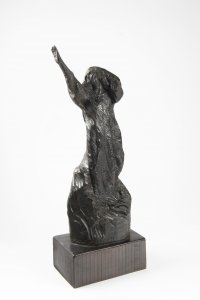
Lot 75 A PROPHET
Starting price160 000 CZK | 6 957 €
Price realized
160 000 CZK | 6 957 €
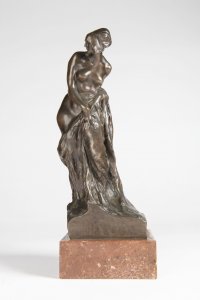
Lot 76 A GIRL WITH A DRAPERY
Starting price24 000 CZK | 1 043 €
Price realized
37 000 CZK | 1 609 €
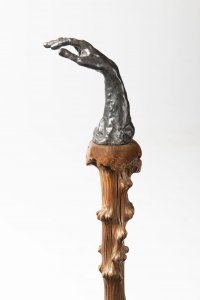
Lot 77 A CANE / A HAND STUDY
Starting price18 000 CZK | 783 €
Price realized
37 000 CZK | 1 609 €
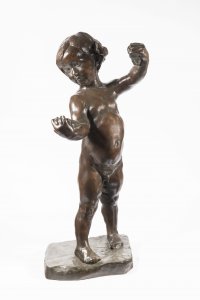
Lot 78 A BOY WITH GRAPES
Starting price85 000 CZK | 3 696 €
Price realized
85 000 CZK | 3 696 €
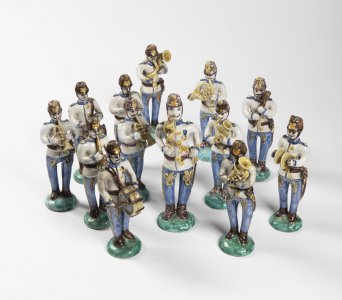
Lot 79 AUSTRO-HUNGARIAN ARMY BAND STUPAVA
Starting price30 000 CZK | 1 304 €
Price realized
150 000 CZK | 6 522 €
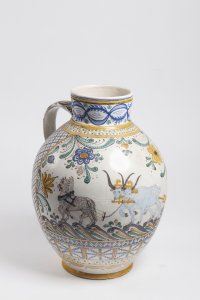
Lot 80 A BIG STUPAVA JUG
Starting price15 000 CZK | 652 €
Price realized
35 000 CZK | 1 522 €
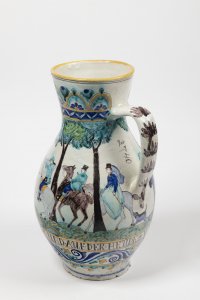
Lot 81 A STUPAVA JUG
Starting price10 000 CZK | 435 €
Price realized
31 000 CZK | 1 348 €
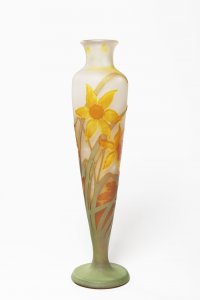
Lot 82 VASE GALLÉ
Starting price35 000 CZK | 1 522 €
Price realized
44 000 CZK | 1 913 €
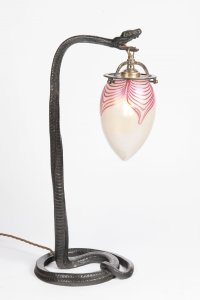
Lot 83 AN ART NOUVEAU LAMP
Starting price24 000 CZK | 1 043 €
Price realized
41 000 CZK | 1 783 €

Lot 84 AN ART DECO BOWL
Starting price12 000 CZK | 522 €

Lot 85 A TEA TABLE (ELEFANTENRÜSSEL TISCH)
Starting price180 000 CZK | 7 826 €
Price realized
330 000 CZK | 14 348 €

Lot 86 A CUBIST BUFFET
Starting price350 000 CZK | 15 217 €
Price realized
550 000 CZK | 23 913 €
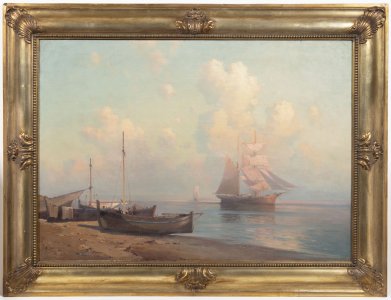
Lot 87 GULF OF NAPLES
Starting price120 000 CZK | 5 217 €
Price realized
410 000 CZK | 17 826 €
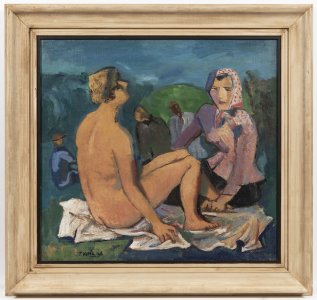
Lot 88 PICNIC ON THE GRASS
Starting price120 000 CZK | 5 217 €
Price realized
170 000 CZK | 7 391 €
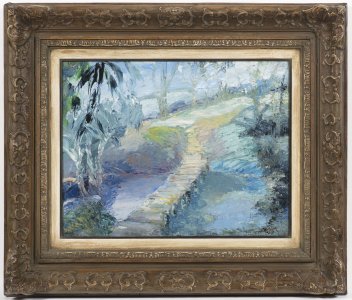
Lot 89 TAHITI
Starting price160 000 CZK | 6 957 €
Price realized
290 000 CZK | 12 609 €
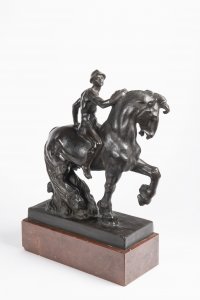
Lot 90 A VICTORY
Starting price65 000 CZK | 2 826 €
Price realized
70 000 CZK | 3 043 €
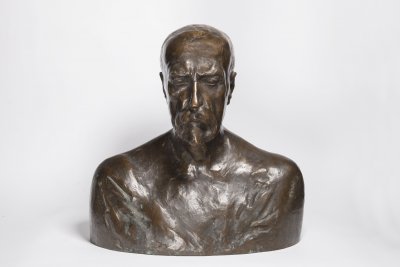
Lot 91 TOMÁŠ GARRIGUE MASARYK
Starting price85 000 CZK | 3 696 €
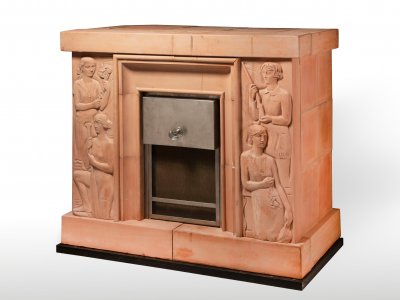
Lot 92 A FIREPLACE
Starting price80 000 CZK | 3 478 €
Price realized
200 000 CZK | 8 696 €
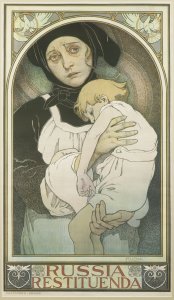
Lot 93 RUSSIA NEEDS RENEWAL
Starting price45 000 CZK | 1 957 €
Price realized
65 000 CZK | 2 826 €
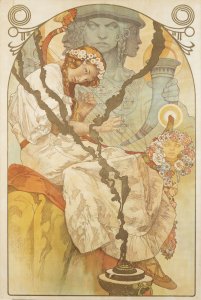
Lot 94 POSTER FOR THE SLAV EPIC
Starting price110 000 CZK | 4 783 €
Price realized
120 000 CZK | 5 217 €
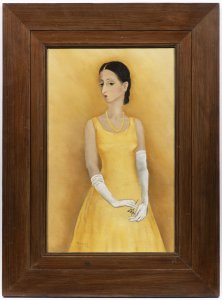
Lot 95 GIRL IN YELLOW DRESS
Starting price250 000 CZK | 10 870 €
Price realized
380 000 CZK | 16 522 €
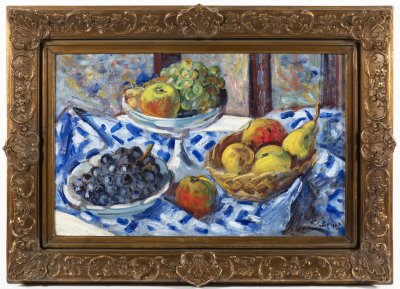
Lot 96 STILL LIFE WITH FRUIT
Starting price120 000 CZK | 5 217 €
Price realized
250 000 CZK | 10 870 €
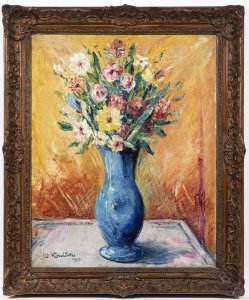
Lot 97 BOUQUET IN A VASE
Starting price30 000 CZK | 1 304 €
Price realized
35 000 CZK | 1 522 €
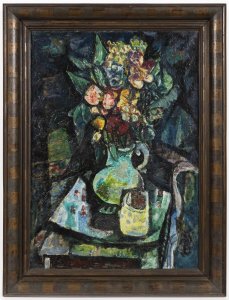
Lot 98 STILL LIFE WITH A BOUQUET
Starting price40 000 CZK | 1 739 €
Price realized
40 000 CZK | 1 739 €

Lot 99 PATH BY THE FOREST
Starting price45 000 CZK | 1 957 €
Price realized
55 000 CZK | 2 391 €
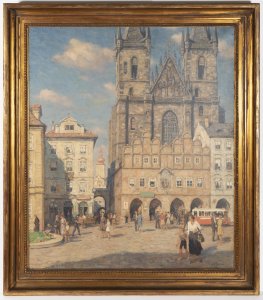
Lot 100 OLD TOWN SQUARE
Starting price95 000 CZK | 4 130 €
Price realized
110 000 CZK | 4 783 €
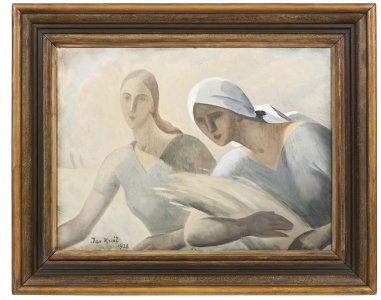
Lot 101 HARVEST
Starting price150 000 CZK | 6 522 €
Price realized
600 000 CZK | 26 087 €
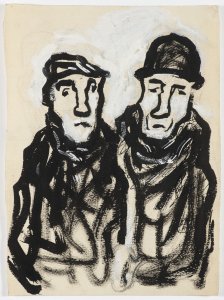
Lot 102 CURRICULUM VITAE
Starting price40 000 CZK | 1 739 €
Price realized
80 000 CZK | 3 478 €
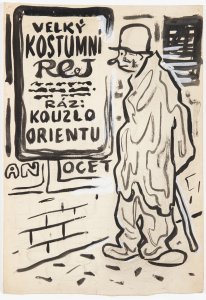
Lot 103 CARNIVAL
Starting price40 000 CZK | 1 739 €
Price realized
85 000 CZK | 3 696 €
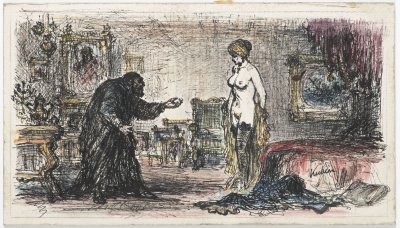
Lot 104 AN OFFER
Starting price22 000 CZK | 957 €
Price realized
42 000 CZK | 1 826 €
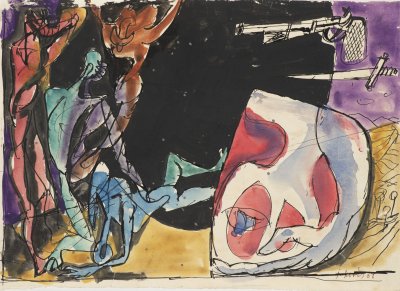
Lot 105 HORRORS OF WAR
Starting price12 000 CZK | 522 €
Price realized
19 000 CZK | 826 €
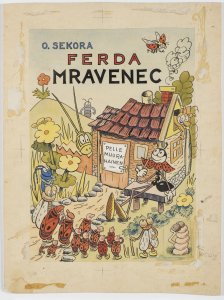
Lot 106 FERDY THE ANT - BOOK COVER
Starting price40 000 CZK | 1 739 €
Price realized
140 000 CZK | 6 087 €

Lot 107 HOW LADYBUG SNITCHED
Starting price30 000 CZK | 1 304 €
Price realized
95 000 CZK | 4 130 €
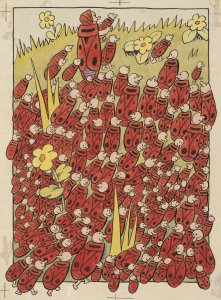
Lot 108 ABOUT THE CUTEST TOYS FOR LITTLE KIDS
Starting price30 000 CZK | 1 304 €
Price realized
90 000 CZK | 3 913 €
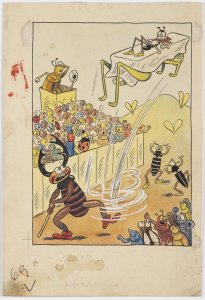
Lot 109 HOW MR. ROSE CHAFER FAILED ON THE RADIO
Starting price30 000 CZK | 1 304 €
Price realized
150 000 CZK | 6 522 €
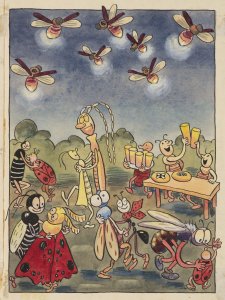
Lot 110 ABOUT THE BIG NIGHT CELEBRATION
Starting price30 000 CZK | 1 304 €
Price realized
140 000 CZK | 6 087 €

Lot 111 STORY WITH A PARROT
Starting price150 000 CZK | 6 522 €
Price realized
210 000 CZK | 9 130 €

Lot 112 FOX
Starting price35 000 CZK | 1 522 €
Price realized
250 000 CZK | 10 870 €

Lot 113 HOW CHILDREN ARE BORN
Starting price4 000 CZK | 174 €
Price realized
18 000 CZK | 783 €
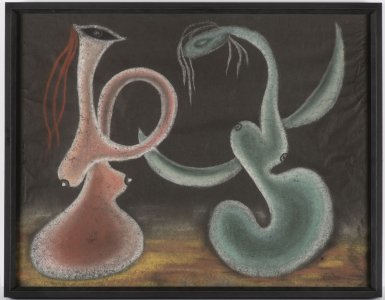
Lot 114 DANCE
Starting price30 000 CZK | 1 304 €
Price realized
38 000 CZK | 1 652 €

Lot 115 BOATS IN A PORT
Starting price8 000 CZK | 348 €
Price realized
25 000 CZK | 1 087 €

Lot 116 NEAR THE CINEMA
Starting price4 000 CZK | 174 €
Price realized
5 500 CZK | 239 €

Lot 117 AN ART DECO SHOWCASE
Starting price28 000 CZK | 1 217 €
Price realized
41 000 CZK | 1 783 €

Lot 118 AN ART DECO DRESSING TABLE
Starting price18 000 CZK | 783 €

Lot 119 AN ART DECO PEDESTAL
Starting price8 000 CZK | 348 €
Price realized
16 000 CZK | 696 €

Lot 120 A TULIP SHOWCASE
Starting price95 000 CZK | 4 130 €
Price realized
160 000 CZK | 6 957 €

Lot 121 A FUNCTIONALIST WRITING DESK
Starting price16 000 CZK | 696 €
Price realized
26 000 CZK | 1 130 €

Lot 122 A FUNCTIONALIST FOLDING TABLE
Starting price12 000 CZK | 522 €
Price realized
22 000 CZK | 957 €

Lot 123 TWO FUNCTIONALIST ARMCHAIRS
Starting price22 000 CZK | 957 €
Price realized
22 000 CZK | 957 €
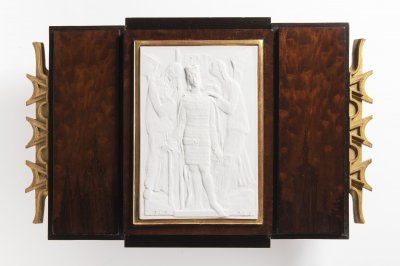
Lot 124 A ST. WENCESLAS ANNIVERSARY PLAQUE
Starting price12 000 CZK | 522 €
Price realized
12 000 CZK | 522 €
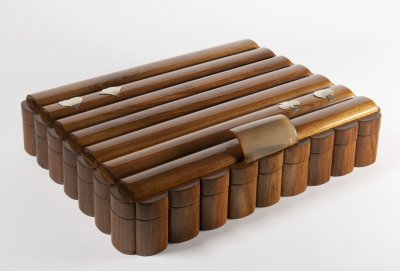
Lot 125 AN ART DECO CARD BOX
Starting price7 000 CZK | 304 €
Price realized
7 000 CZK | 304 €
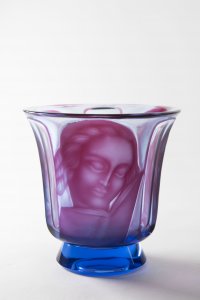
Lot 126 AN ART DECO VASE
Starting price12 000 CZK | 522 €
Price realized
12 000 CZK | 522 €
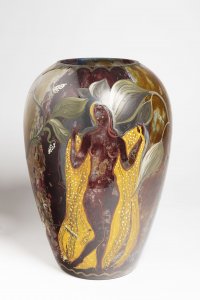
Lot 127 A PAINTED VASE
Starting price8 000 CZK | 348 €
Price realized
21 000 CZK | 913 €
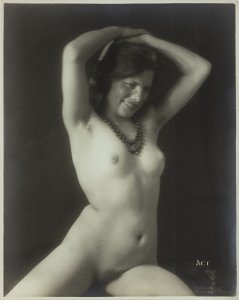
Lot 128 NUDE
Starting price20 000 CZK | 870 €
Price realized
20 000 CZK | 870 €
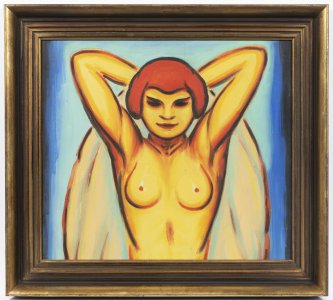
Lot 129 MOTHER EARTH
Starting price75 000 CZK | 3 261 €
Price realized
130 000 CZK | 5 652 €
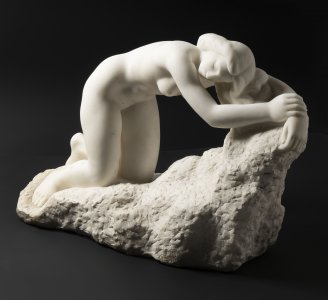
Lot 130 ANDROMEDA
Starting price220 000 CZK | 9 565 €
Price realized
270 000 CZK | 11 739 €
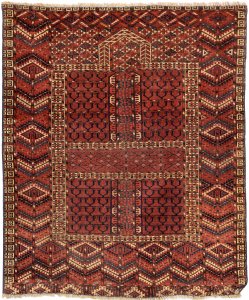
Lot 131 AN ANTIQUE RUG TEKKE "ENGSI"
Starting price9 000 CZK | 391 €
Price realized
18 000 CZK | 783 €
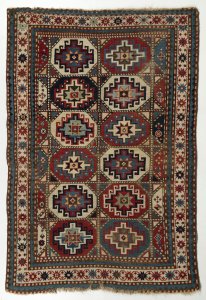
Lot 132 AN ANTIQUE MOGHAN KAZAK RUG
Starting price17 000 CZK | 739 €
Price realized
21 000 CZK | 913 €
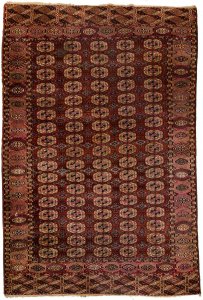
Lot 133 AN ANTIQUE RUG TEKKE
Starting price14 000 CZK | 609 €
Price realized
22 000 CZK | 957 €

Lot 134 AN ANTIQUE RUG KARABAGH
Starting price12 000 CZK | 522 €
Price realized
17 000 CZK | 739 €

Lot 135 A FACHRALO KAZAK RUG
Starting price22 000 CZK | 957 €
Price realized
22 000 CZK | 957 €
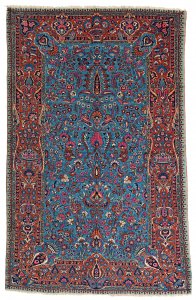
Lot 136 A KASHAN MOHTASHEM RUG
Starting price65 000 CZK | 2 826 €
Price realized
95 000 CZK | 4 130 €
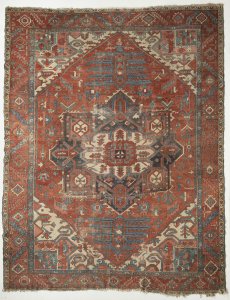
Lot 137 AN ANTIQUE RUG HERIZ
Starting price18 000 CZK | 783 €
Sold

Lot 138 A HERIZ RUG
Starting price32 000 CZK | 1 391 €
Price realized
48 000 CZK | 2 087 €
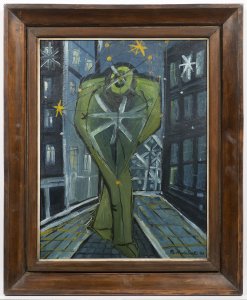
Lot 139 NIGHT WALKER
Starting price290 000 CZK | 12 609 €
Price realized
290 000 CZK | 12 609 €
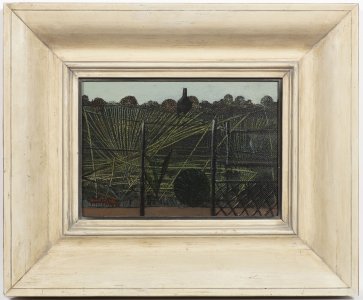
Lot 140 LANDSCAPE - MACHINE
Starting price220 000 CZK | 9 565 €
Price realized
430 000 CZK | 18 696 €
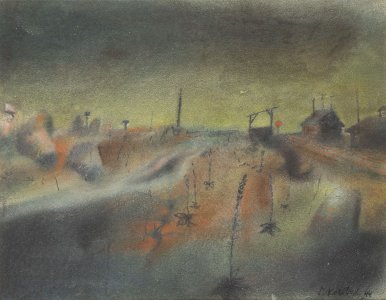
Lot 141 LANDSCAPE WITH A TRAIN LINE
Starting price30 000 CZK | 1 304 €
Price realized
65 000 CZK | 2 826 €
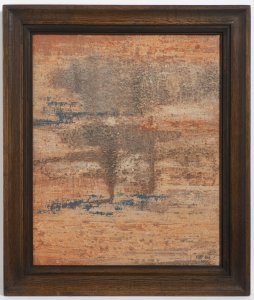
Lot 142 SWAMPS
Starting price80 000 CZK | 3 478 €
Price realized
140 000 CZK | 6 087 €
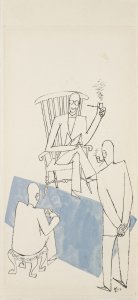
Lot 143 BOOK CLUB
Starting price26 000 CZK | 1 130 €
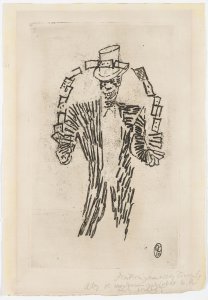
Lot 144 MAGICIAN WITH CARDS II
Starting price12 000 CZK | 522 €
Price realized
28 000 CZK | 1 217 €
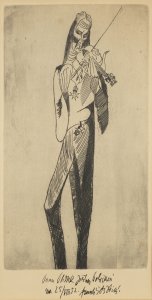
Lot 145 PAGANINI
Starting price16 000 CZK | 696 €
Price realized
25 000 CZK | 1 087 €

Lot 146 SUN SHIP
Starting price28 000 CZK | 1 217 €
Price realized
35 000 CZK | 1 522 €
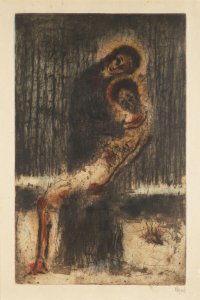
Lot 147 PIETA
Starting price60 000 CZK | 2 609 €
Price realized
170 000 CZK | 7 391 €
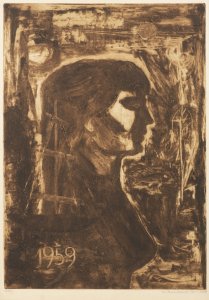
Lot 148 TEKLA I
Starting price40 000 CZK | 1 739 €
Price realized
70 000 CZK | 3 043 €
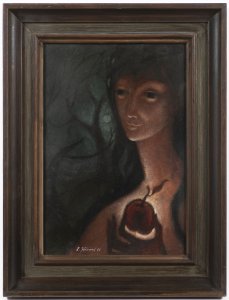
Lot 149 EVE
Starting price65 000 CZK | 2 826 €
Price realized
65 000 CZK | 2 826 €
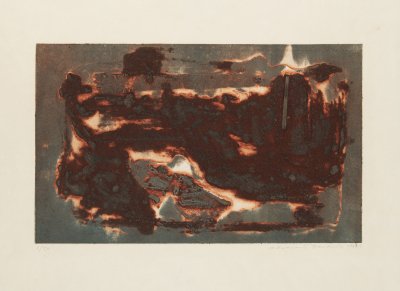
Lot 150 UNTITLED
Starting price35 000 CZK | 1 522 €
Price realized
36 000 CZK | 1 565 €
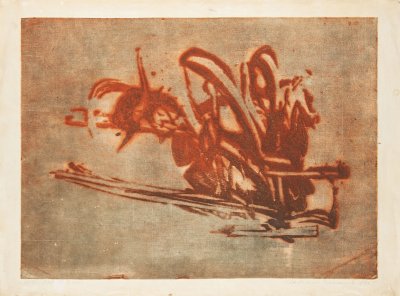
Lot 151 PHOENIX BIRD
Starting price55 000 CZK | 2 391 €
Price realized
70 000 CZK | 3 043 €
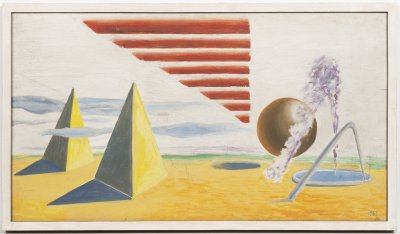
Lot 152 LANDSCAPE OF DREAMS
Starting price18 000 CZK | 783 €
Price realized
20 000 CZK | 870 €
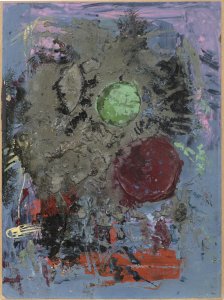
Lot 153 TARGETS 2
Starting price12 000 CZK | 522 €
Price realized
12 000 CZK | 522 €
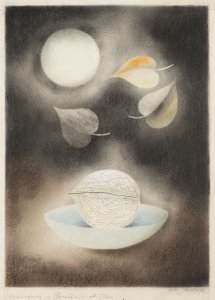
Lot 154 CINDERELLA NUT LULLABY
Starting price25 000 CZK | 1 087 €
Price realized
37 000 CZK | 1 609 €
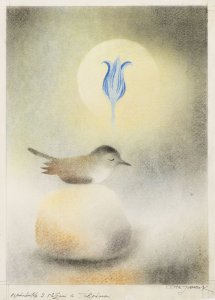
Lot 155 LULLABY WITH ROSES AND TULIP
Starting price25 000 CZK | 1 087 €
Price realized
37 000 CZK | 1 609 €
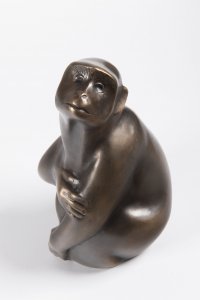
Lot 156 A SITTING MONKEY
Starting price45 000 CZK | 1 957 €
Price realized
48 000 CZK | 2 087 €
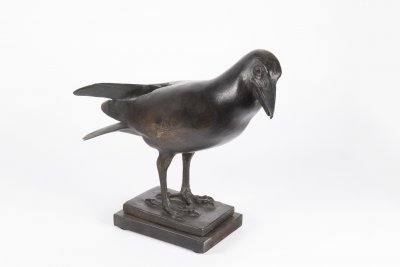
Lot 157 A CROW
Starting price25 000 CZK | 1 087 €
Price realized
50 000 CZK | 2 174 €
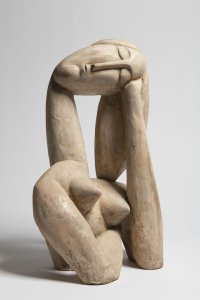
Lot 158 HALF NUDE
Starting price15 000 CZK | 652 €
Price realized
85 000 CZK | 3 696 €
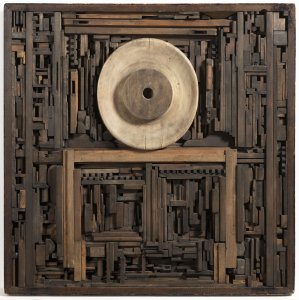
Lot 159 A MADONNA
Starting price350 000 CZK | 15 217 €
Price realized
800 000 CZK | 34 783 €
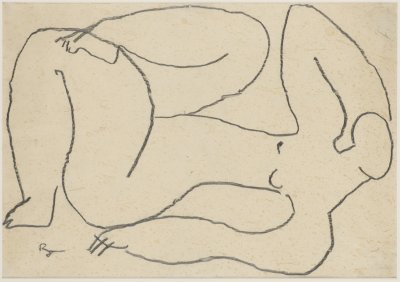
Lot 160 A LYING FEMALE NUDE
Starting price1 000 CZK | 43 €
Price realized
1 000 CZK | 43 €
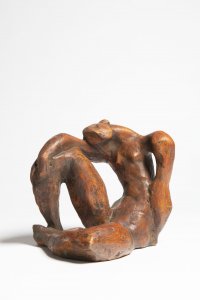
Lot 161 A SEATED FEMALE NUDE
Starting price6 000 CZK | 261 €
Price realized
18 000 CZK | 783 €
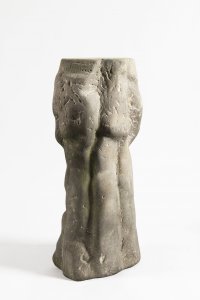
Lot 162 A COMPOSITION
Starting price38 000 CZK | 1 652 €
Price realized
38 000 CZK | 1 652 €
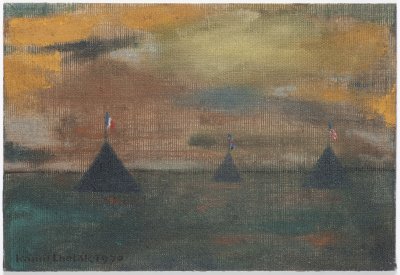
Lot 163 ARMISTICE 1918
Starting price180 000 CZK | 7 826 €
Price realized
240 000 CZK | 10 435 €
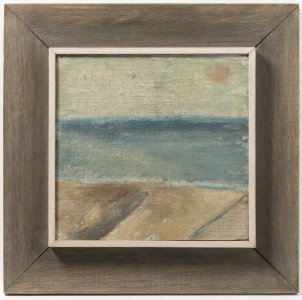
Lot 164 SEA
Starting price35 000 CZK | 1 522 €
Price realized
75 000 CZK | 3 261 €
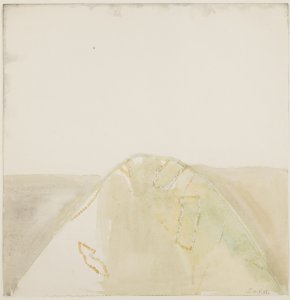
Lot 165 LANDSCAPE
Starting price8 000 CZK | 348 €
Price realized
11 000 CZK | 478 €
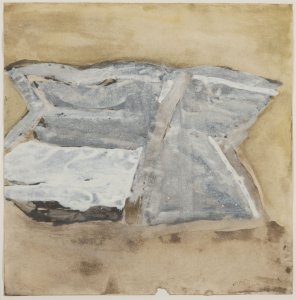
Lot 166 STONE
Starting price8 000 CZK | 348 €
Price realized
13 000 CZK | 565 €
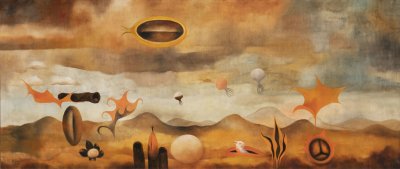
Lot 167 LANDSCAPE WITH THE GERMS OF LIFE
Starting price380 000 CZK | 16 522 €
Price realized
600 000 CZK | 26 087 €
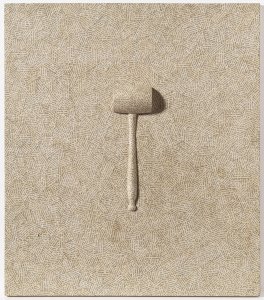
Lot 168 MALLET
Starting price120 000 CZK | 5 217 €
Price realized
200 000 CZK | 8 696 €
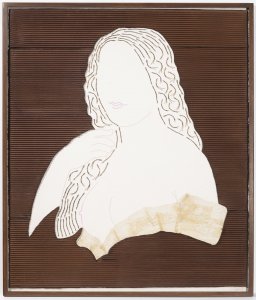
Lot 169 JOSEPHINE
Starting price300 000 CZK | 13 043 €
Price realized
500 000 CZK | 21 739 €
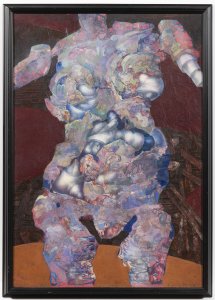
Lot 170 JUST JUMPING A LITTLE BIT
Starting price120 000 CZK | 5 217 €
Price realized
150 000 CZK | 6 522 €
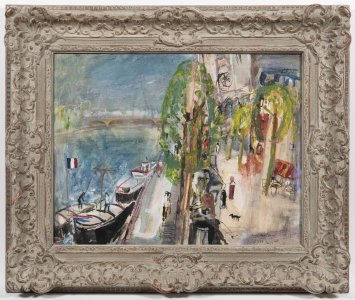
Lot 171 IN PARIS NEAR SEINE
Starting price65 000 CZK | 2 826 €
Price realized
170 000 CZK | 7 391 €
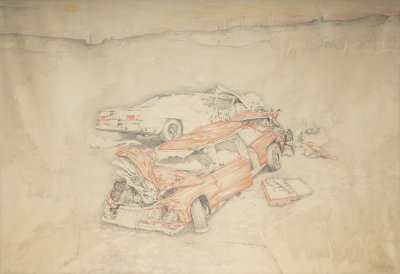
Lot 172 MYSTERY
Starting price30 000 CZK | 1 304 €
Price realized
30 000 CZK | 1 304 €
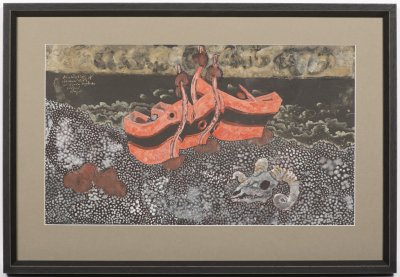
Lot 173 BLACK BOATS
Starting price14 000 CZK | 609 €
Price realized
16 000 CZK | 696 €
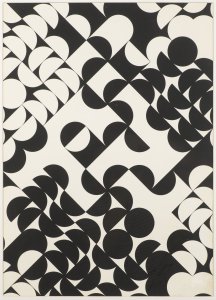
Lot 174 BLACK AND WHITE TEXTURE
Starting price18 000 CZK | 783 €
Price realized
65 000 CZK | 2 826 €
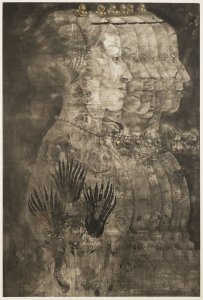
Lot 175 IL SORRISO - SMILE
Starting price28 000 CZK | 1 217 €
Price realized
80 000 CZK | 3 478 €
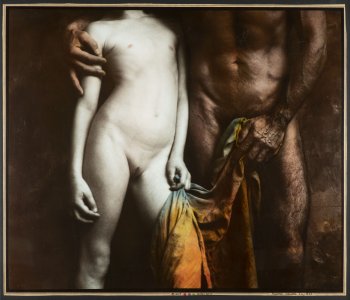
Lot 176 CHILDE'S INNOCENCE
Starting price28 000 CZK | 1 217 €
Price realized
28 000 CZK | 1 217 €
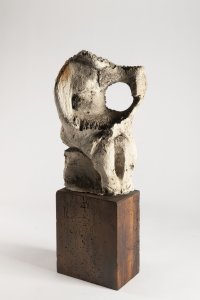
Lot 177 A TORSAL SEATED FIGURE
Starting price12 000 CZK | 522 €
Price realized
12 000 CZK | 522 €
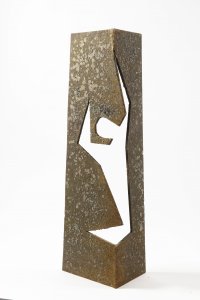
Lot 178 A FIGURE
Starting price30 000 CZK | 1 304 €
Price realized
30 000 CZK | 1 304 €
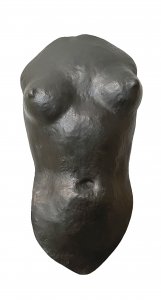
Lot 179 SHIELD - FEMALE BREASTS
Starting price65 000 CZK | 2 826 €

Lot 180 TWO DESIGN ARMCHAIRS
Starting price40 000 CZK | 1 739 €
Price realized
45 000 CZK | 1 957 €

Lot 181 TWO DESIGN ARMCHAIRS
Starting price40 000 CZK | 1 739 €
Price realized
55 000 CZK | 2 391 €

Lot 182 A BIG DESIGN COFFEE TABLE
Starting price20 000 CZK | 870 €
Price realized
24 000 CZK | 1 043 €

Lot 183 DESIGN FLOOR LAMP
Starting price20 000 CZK | 870 €
Price realized
20 000 CZK | 870 €
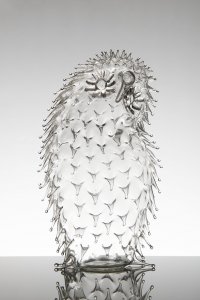
Lot 184 AN OWL
Starting price4 000 CZK | 174 €
Price realized
25 000 CZK | 1 087 €
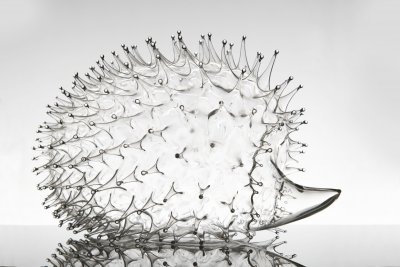
Lot 185 A HEDGEHOG
Starting price5 000 CZK | 217 €
Price realized
55 000 CZK | 2 391 €
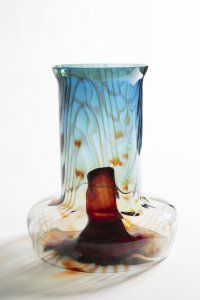
Lot 186 A VASE WITH RUBY SPIKE IN THE BOTTOM
Starting price15 000 CZK | 652 €
Price realized
22 000 CZK | 957 €
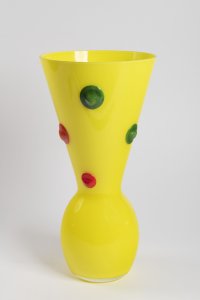
Lot 187 A VASE
Starting price8 000 CZK | 348 €
Price realized
13 000 CZK | 565 €
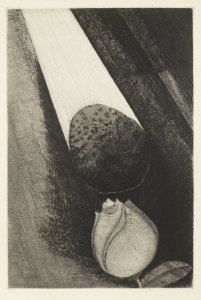
Lot 188 ROCK FALLING ON A ROSE
Starting price18 000 CZK | 783 €
Price realized
60 000 CZK | 2 609 €
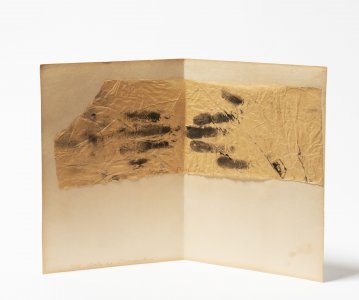
Lot 189 TOUCH
Starting price35 000 CZK | 1 522 €
Price realized
70 000 CZK | 3 043 €
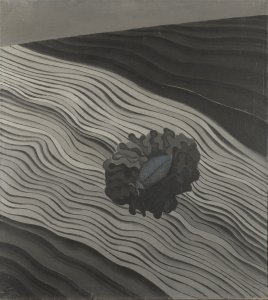
Lot 190 A HIBERNATION
Starting price900 000 CZK | 39 130 €
Price realized
3 000 000 CZK | 130 435 €
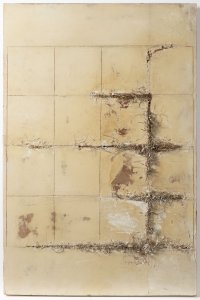
Lot 191 SPROUTING
Starting price350 000 CZK | 15 217 €
Price realized
1 000 000 CZK | 43 478 €
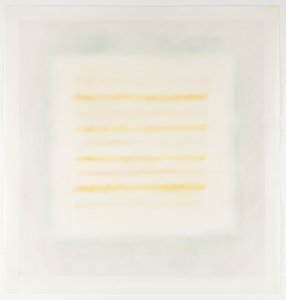
Lot 192 A WINDOW TO DEPTHS
Starting price180 000 CZK | 7 826 €
Price realized
650 000 CZK | 28 261 €

